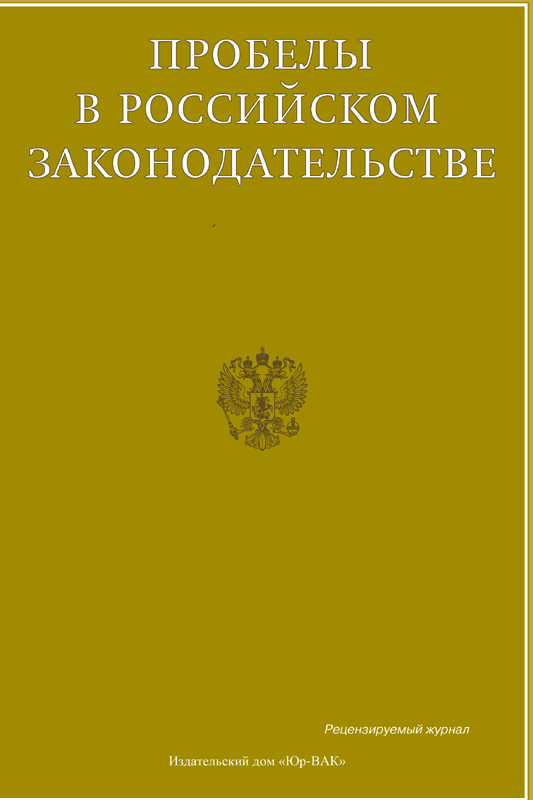Problems and Prospects for the Use of Information and Communication Technologies in the Activities of the State Duma of the Federal Assembly of the Russian Federation
- 作者: Lolaeva A.S.1
-
隶属关系:
- Gorskiy State Agrarian University
- 期: 卷 15, 编号 1 (2022)
- 页面: 32-40
- 栏目: Articles
- URL: https://journals.eco-vector.com/2072-3164/article/view/531489
- ID: 531489
如何引用文章
详细
Objective. The article deals with the problems and prospects of using information and communication technologies in the activities of the State Duma of the Federal Assembly of the Russian Federation. The topic is relevant, because in modern public administration are emerging e-democracy, e-lawmaking due to the challenge of the modern world. Digitalization of all spheres of life greatly facilitates the process of interaction between people, as digitalization of public authorities allows them to function smoothly even in the most complex situations, allows them to optimize resources and document flow. Informatization of the process of electing parliamentarians significantly increases the transparency of elections and lawmaking activities, which has a positive impact on reducing absenteeism. The article provides a comparative analysis of the use of modern information and communication technologies, in the activities of parliaments of foreign countries, which significantly change the methods of collection, processing and presentation of information in the legislative activity. Conclusions. The author determines that the informatization of the State Duma has been going on for over 20 years. Digitalization of the State Duma is taking place in all spheres of life. In almost all cases, information systems and technologies are aimed at ensuring the principle of transparency in parliamentary activities, as well as more effective communication and optimization of work in general. It is proposed to develop a technical and regulatory basis for the introduction of changes to the existing systems to ensure legislative activity and automated record keeping and document flow, which will allow the subject of the right of legislative initiative to introduce a bill to the State Duma without paper bureaucracy.
全文:
作者简介
Albina Lolaeva
Gorskiy State Agrarian University
Email: mirag.8184@yandex.ru
Cand.Sci.(Law), Associate Professor, Associate Professor of Constitutional Law Department Vladikavkaz, Russian Federation
参考
- Gazizov R.R. Prospects of development of technologies of the electronic state in Russia // Leningrad Law Journal. 2015. №2 (40). С. 53-58.
- Dzidzoev R.M. Institutes of electronic (digital) democracy in Russia // Vestnik of Kuban State University. 2019. № 2. С. 10-13/
- Lolaeva A.S. Interaction of federal and regional authorities and local governments in the provision of services in electronic form in the Russian Federation // Bulletin of scientific papers of young scientists, graduate students and undergraduates of Federal State Budgetary Educational Institution of Higher Professional Education "Gorsky State Agrarian University". Collection of articles. Vladikavkaz, 2020. С. 252-253.
- Instruction of the Head of the State Duma of the Federal Assembly of the Russian Federation № 2-75 of June 29, 2001 "On commissioning of the first phase of the Automated system of ensuring the legislative activity of the State Duma" // The document was not published. Cit. on SPC ConsultantPlus (date of reference: 04.01.2022).
- Korotkov A.V. State policy of the Russian Federation in the development of the information society // Social and human sciences. Domestic and foreign literature. Series 4: State and law. Abstract Journal. 2009. № 3. С. 65-67.
- Bobrov A.V. New information technologies: some humanitarian aspects // Society and the right. Scientific-practical magazine. Krasnodar: Publishing house of Krasnodar. university of the Ministry of Internal Affairs of Russia, 2008. № 2 (20). С. 268-270.
- Official site of the State Duma of the Federal Assembly of the Russian Federation // http://www.duma.gov.ru (access date: 04.01.2022).
- Kiselev A.S. Modern theoretical approaches to the concept of electronic state // Actual problems of Russian law. 2018. № 6. С. 32-39.
补充文件








